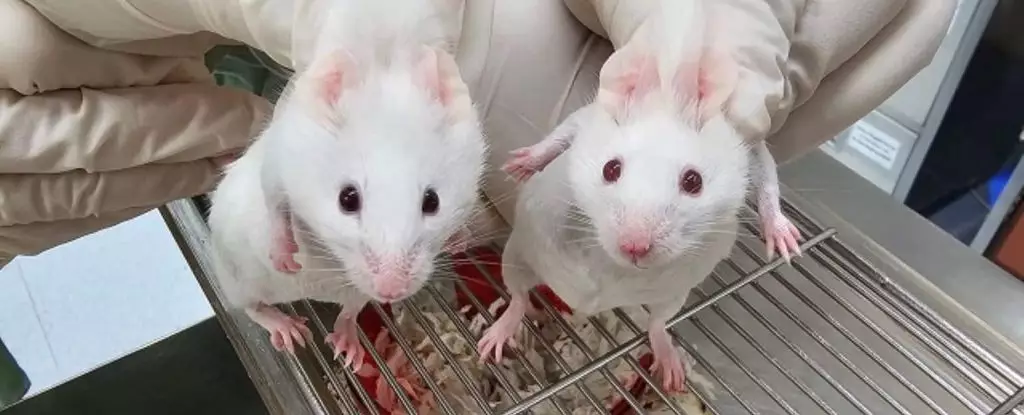In the realm of evolutionary biology, few discoveries illuminate the intricate tapestry of life as the recent experiments conducted in Hong Kong. A group of unique mice, bearing a striking resemblance to their ordinary counterparts yet embodying revolutionary genetic modifications, has ushered in a new understanding of our evolutionary lineage. This remarkable phenomenon was achieved by integrating genes from choanoflagellates, single-celled organisms considered the closest living relatives of animals. This groundbreaking study provides valuable insights into the evolutionary origins of pluripotency and animal development, reshaping our understanding of not just mice, but the very foundations of multicellular life.
The innovative experiment involved splicing specific choanoflagellate genes into the genetic makeup of laboratory mice. At first glance, these genetically modified mice, with their typical beady black eyes and gray fur, appear as standard household rodents. However, they serve as a living testament to an astonishing concept: that key genetic components of pluripotency—an essential function in embryonic development—have roots extending back nearly a billion years. Alex de Mendoza, a geneticist from Queen Mary University, aptly characterized the results as a demonstration of “extraordinary continuity of function across nearly a billion years of evolution.”
By examining the integration of choanoflagellate genes responsible for pluripotency, researchers were able to bridge a significant gap in our understanding of how multicellular life evolved from single-celled organisms. This genetic continuity not only suggests that certain fundamental genetic tools appeared far earlier than previously thought but also hints that the evolutionary process likely involved a repurposing of existing cellular functions into the complex systems seen in modern multicellular organisms.
Pluripotency—the ability of embryonic stem cells to differentiate into various cell types—has historically been viewed as a landmark characteristic of multicellular organisms. Traditionally, it’s believed that this capability emerged around 700 million years ago with the advent of multicellularity. However, the implications of the Hong Kong experiment challenge this conception. Prior studies have suggested that the very genes responsible for pluripotent properties may have existed within simpler organisms long before multicellularity took hold.
The potential significance of this discovery cannot be overstated. If genes associated with pluripotency were indeed present in choanoflagellates, it transforms our understanding of the evolutionary timeline and suggests that these ancient genes may have initiated a cascade of developmental innovations that paved the way for the complexities of animal life. This understanding could redefine how scientists study evolution, shifting focus towards the roles of simpler organisms in shaping multicellular life.
The study conducted by scientists, including researchers from the University of Hong Kong and the Max Planck Institute, meticulously examined the functional outputs of choanoflagellate genes in a mammalian context. By replacing the mammalian Sox2 gene with its choanoflagellate counterpart in cloned mouse stem cells, the researchers explored how these ancient genes interact within the intricate frameworks of mammalian development.
The resultant chimeric mice displayed a fascinating mixture of traits, suggesting that the choanoflagellate Sox genes were capable of functioning effectively within the mammalian developmental pathway. These findings indicate that the apparatus necessary for creating pluripotent stem cells might have originated in simpler ancestral forms, reinforcing the idea that evolution often operates by modifying existing components rather than generating entirely new systems.
These findings possess transformative implications for the field of stem cell research and regenerative medicine. As the understanding of pluripotency and its origins continues to expand, researchers may one day be able to manipulate these molecular mechanisms to produce more effective stem cell therapies. Such advancements could inaugurate a new era in medical treatments, enabling scientists to harness these ancient genetic systems for modern applications.
In addition to their biomedical relevance, the results of this study elucidate the complexity of life’s evolution, highlighting the interconnectedness of different organisms across the evolutionary tree. As we delve deeper into the genetic substrates of life, it is crucial to appreciate the profound continuity and significance of even the simplest life forms in shaping the biodiversity we witness today.
The genetic experiments conducted on mice in Hong Kong do more than merely create a scientifically curious animal; they illuminate the intricate and often surprising pathways through which evolution operates. By revealing the powerful links between ancient single-celled organisms and contemporary multicellular life, this research fosters a deeper understanding of developmental biology and evolutionary history, inviting us to reassess the narratives we have long held regarding the origins of life on Earth. The implications for future biological research may well be as profound as the revelations themselves, as we stand on the precipice of unlocking the secrets woven into the very fabric of our genetic heritage.

